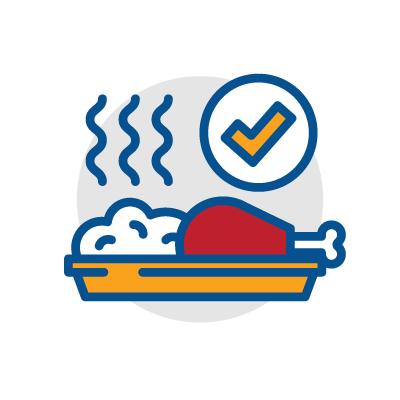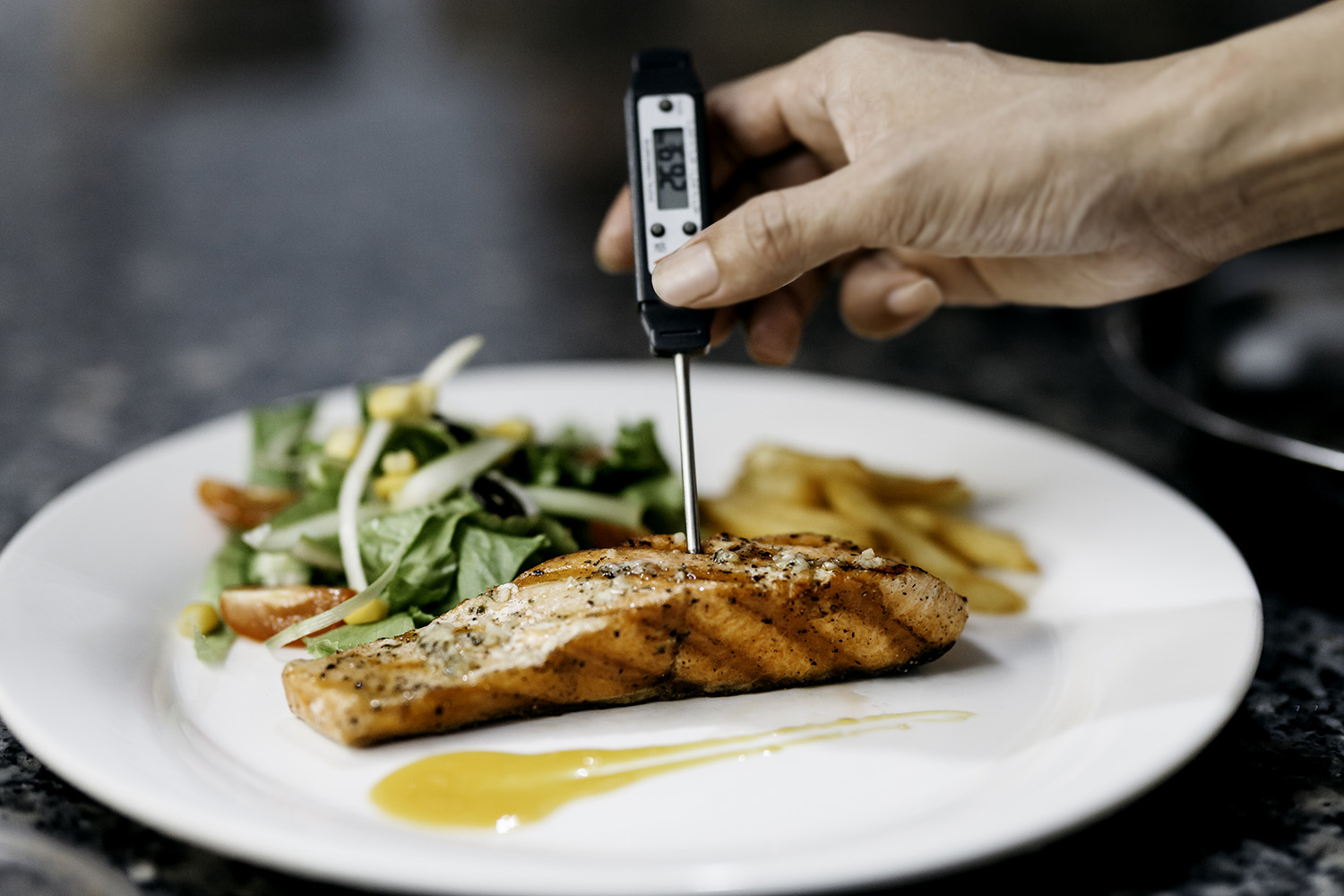 Consumer Food Safety
Consumer Food Safety
Older adults may be at an increased risk of extreme illness or hospitalization from foodborne illness. Nutrition programs can help by providing education on proper food handling, storage, and preparation requirements.
 Quick Guides
Quick Guides
- Food Thermometers — Tips on using food thermometers to prevent foodborne illness (Nutrition and Aging Resource Center)
- Cleaning your Refrigerator Because of a Recall— Steps to safely clean your fridge (CDC, 2024)
- Four Steps to Food Safety— Tools and tips for preventing food poisoning (CDC, 2024)
- How To Cut Food Waste and Maintain Food Safety— Information on safe storage of foods (FDA, 2019)
- Kitchen Food Safety Basics— Practices to reduce your risk of foodborne illness (Partnership for Food Safety Education)
 Toolkits
Toolkits
- Food Safety Educational Materials— Stories, social media graphics,
infographics, videos, and fact sheets (CDC, 2025) - Home Food Safety— Infographics, fact sheets, and handouts (Academy of Nutrition and Dietetics)
- Food Preservation: Freezing— Methods to freeze by type of food and specific foods (Utah State University Extension)
- Food Storage— Methods to store food by type of food and specific foods (Utah State University Extension)
 Fact Sheets
Fact Sheets
- Three Safe Ways To Defrost Food — Safe methods and best practices for defrosting food (Nutrition and Aging Resource Center)
- Clean Fruits and Vegetables— Tips, including for specific fruits and vegetables (Iowa State University Extension and Outreach, 2017)
- Freeze Leftovers— Tips for safely freezing foods (Iowa State University Extension and Outreach, 2017)
- Store Bread— Tips on freezing, thawing, and storing bread (Iowa State University Extension and Outreach, 2017)
- Store Bananas— Tips for selecting, storing, cleaning, and preparing bananas (Iowa State University Extension and Outreach)
- Reduce Food Waste at Home— Tips for food storage and preparation (Iowa State University Extension and Outreach, 2023)
- Temperature Rules for Safe Cooking— Safe minimum internal temperatures (National Heart, Lung and Blood Institute)
 Presentations
Presentations
- Two-minute how-to videos from Iowa State University Extension and Outreach (YouTube)
- Cleaning Fruits and Vegetables(2013)
- Freezing Leftovers(2013)
- Storing Bread(2013)
- Storing Bananas(2013)
- Storing Fruits and Veggies(2013)

